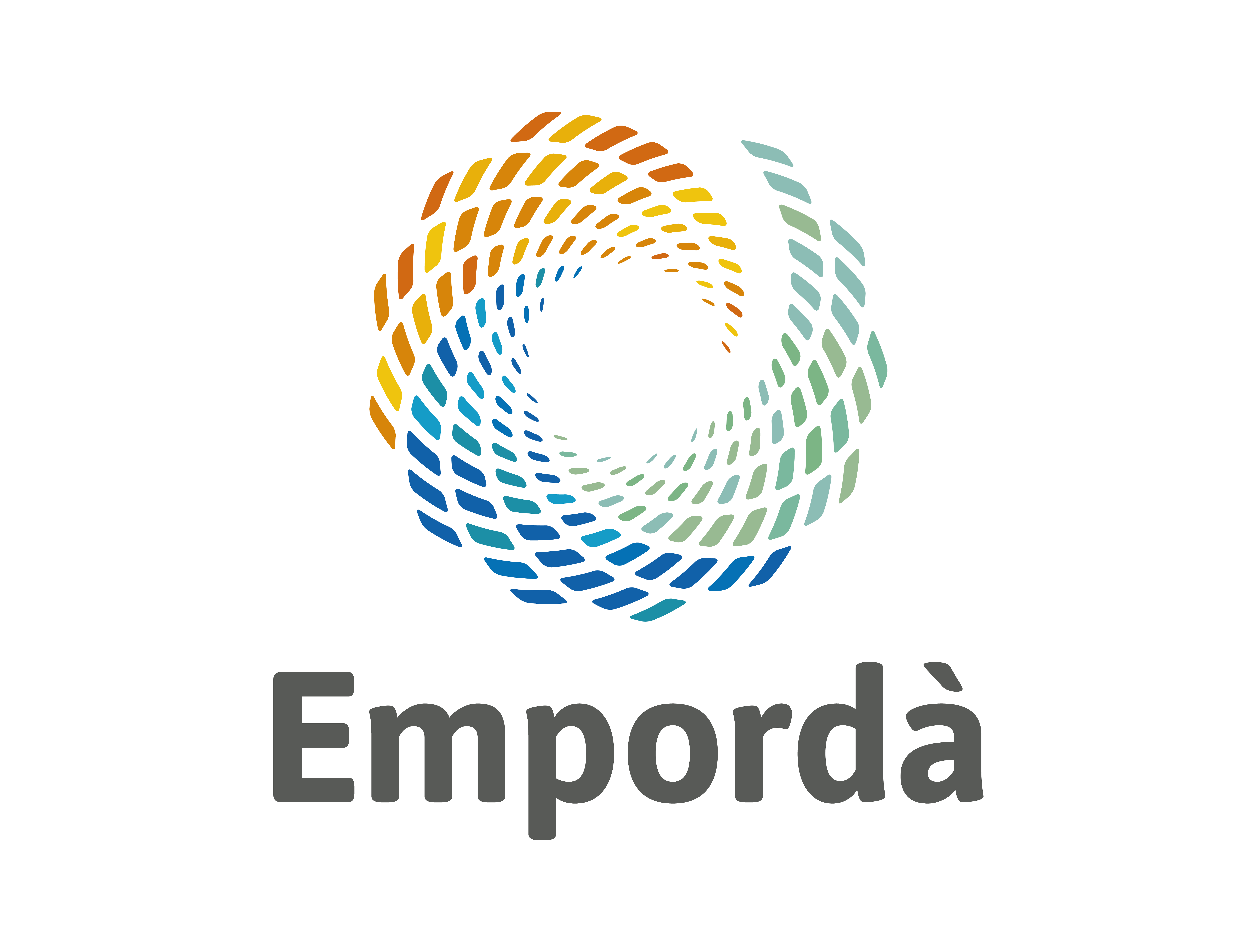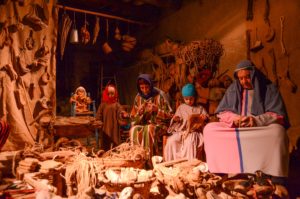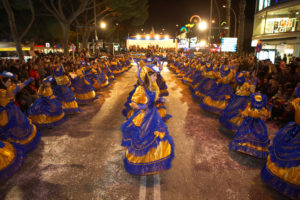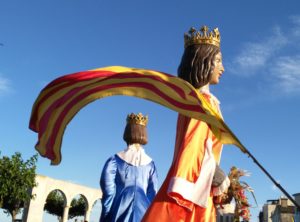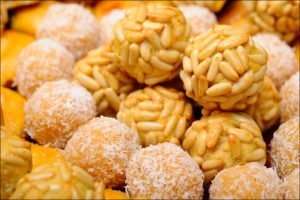Holy Week
-
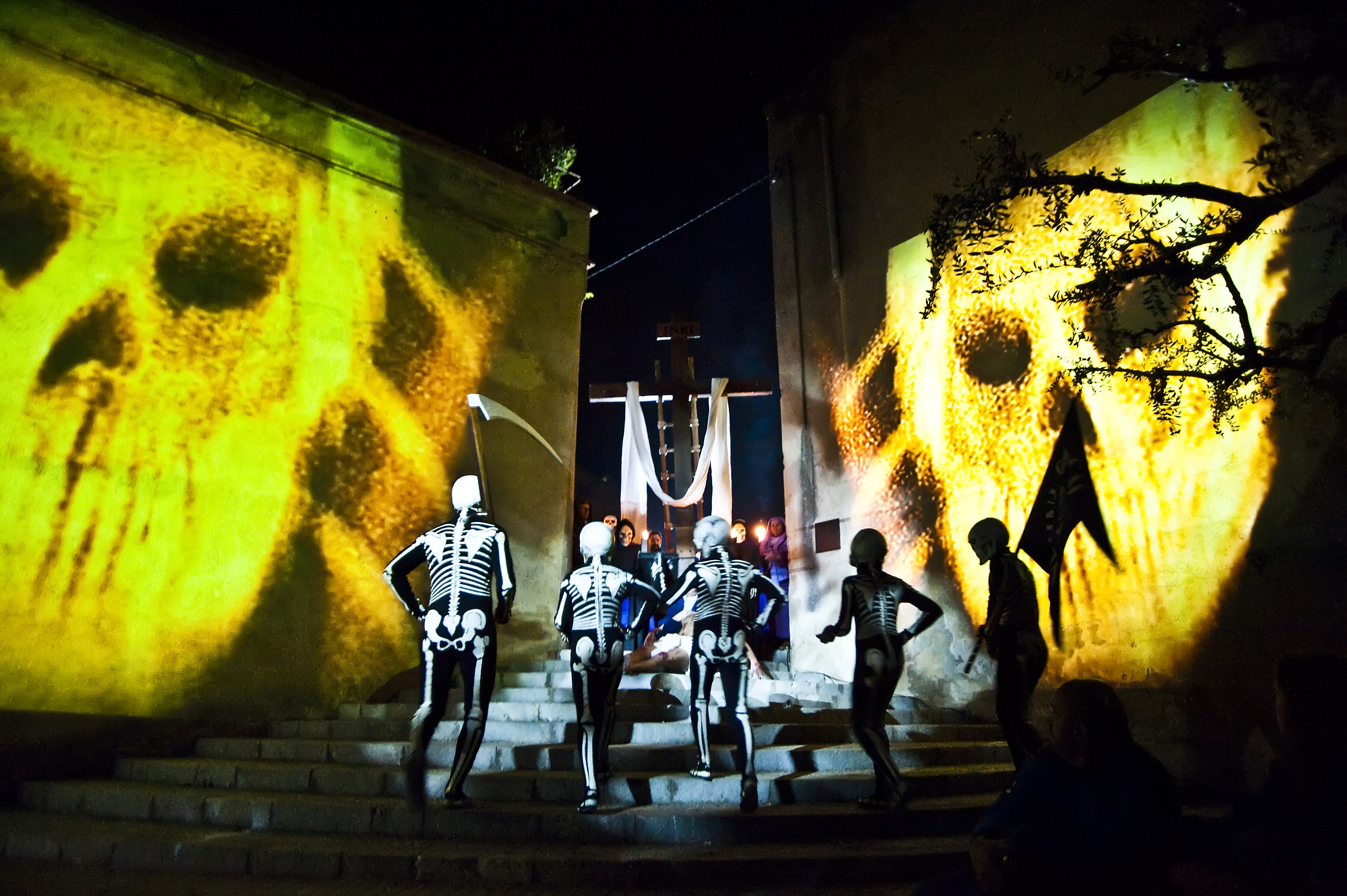
Holy Week is the most important festival in Christianity. It commemorates the last days of Christ’s life and his death and subsequent resurrection. The acts start with Friday of Sorrows and Palm Sunday, although the main event is the following week. On Holy Thursday, the Thursday of Holy Week, the Last Supper is commemorated and different festivals are held around the region, such as the Dance of Death in Verges. This followed by Good Friday when many of the processions are held. Three days later, Holy Week ends with the celebration of Easter Sunday and Monday, which symbolise the resurrection of Christ.
As well as the specific Masses, the typical events in Holy Week are the processions where religious brotherhoods transport religious figures. The processions are often accompanied by parades of people dressed as Roman soldiers. Also, religious plays are often performed that depict the last days of Christ, known as Passion plays.
Another typical feature of Holy Week is the mona de pasqua, a sweet godparents give to their godchildren to be eaten on the last day of the period of festivities.
Holy Week celebrations in the Baix Empordà have some distinctive elements. For example, making and eating brunyols – doughnuts – is traditional in Lent and especially in Holy Week. These are sweets made from dough with a flattened spherical shape and a compact texture and they have an aniseed flavour. The lack of a hole, in contrast with other similar sweets, is their distinguishing feature.
Among the traditions native to the Baix Empordà, the Procession of Verges, which passes through the streets of the old part of this village, is particularly noteworthy. It is famous thanks to one particular part of it, the Dance of Death in which five people dressed as skeletons dance to the sound of a drum, symbolising with various attributes how time constantly passes and is limited. The distinctiveness of this danse macabre with medieval origins has resulted in it being made a Heritage Festival of National Interest.
On the other hand, in the village of Bellcaire d’Empordà, during Holy Week the Bandera de Catalunya (Flag of Catalonia) play is performed. This is based on the work of the same name written by Esteve Albert and first performed in 1979. This event recreates the end of the county of Empúries.
COMPARTEIX A LES XARXES SOCIALS:

